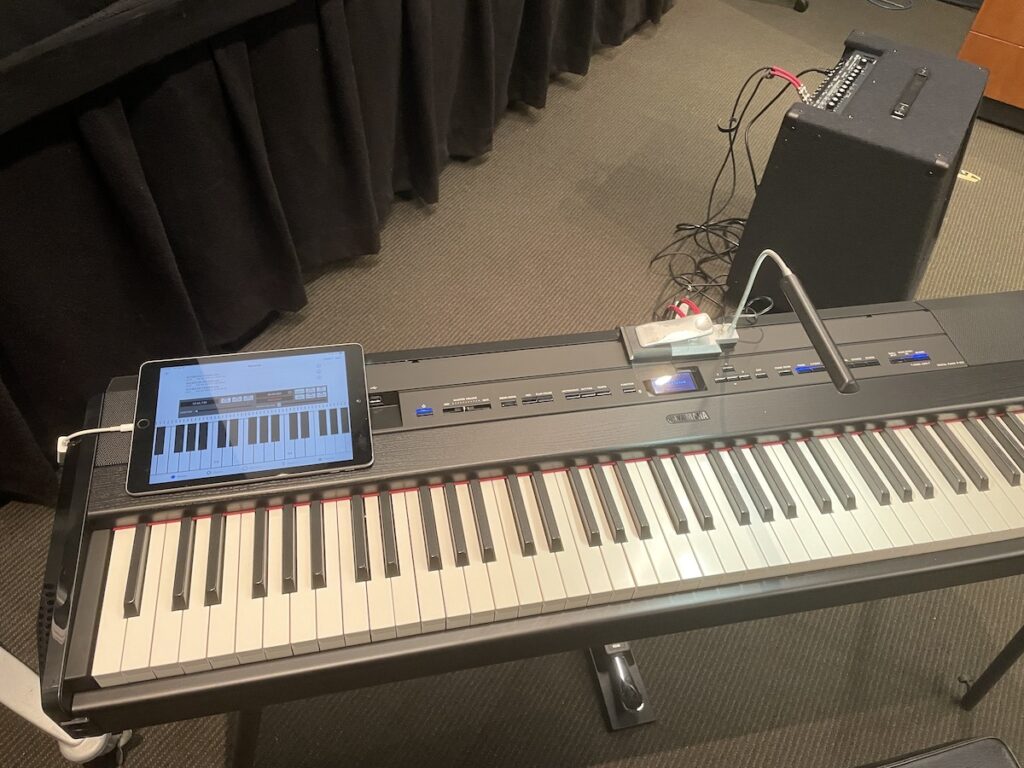In February, I was a a guest speaker-accompanist at Antonia Lant’s silent film course at NYU’s Cinema Studies program. One of the films I played for was a 1919 two-reel educational film made in England called Dr. Wise on Influenza.
Dr. Wise on Influenza (1919) is an unusual film, as it’s only one I’ve encountered that directly addresses mask-wearing during the last global pandemic. When I asked Antonia where she’d found the film, she let me know that it’s on the YouTube channel run by the BFI (British Film Institute), and had been streamed to the projector during the class.
Since the film was something that had slipped through my radar during the pandemic, I wanted to share it here so more people can discover it. When I went to the link to watch the film, I noticed the edition of the film that the BFI posted on YouTube has no score. Understandable. No film archive has funding to hire someone to score every silent film they post to their official YouTube channel.
I record a lot of my performances, both for reference and for using excerpts on my Silent Film Music Podcast, and planned to do so at the NYU Cinema Studies class session.
A little light bulb went off over my head. Wouldn’t it be great to add the score I’d recorded to the film that the BFI had posted?
So then, how to add the musical score to the film without ripping it from the BFI’s channel, adding the music, and re-posting the film on my own channel? Possible – but unethical. It’s their content, after all. I don’t like it when people do this with films I’ve posted to my YouTube channel, and didn’t want to do this with one of the BFI’s uploads.
I recorded my scores for the films I accompanied during the class in a different way than usual. Ordinarily I’d bring my Zoom h2n digital recorder and place it on or near the piano. Since I knew that I’d be playing a digital keyboard, I brought a MIDI-to-USB adapter cable, and ran the keyboard’s MIDI out to my iPad. The keyboard’s own audio still went out to the amp that you see in the photo below.


There were 2 signals coming out of the keyboard simultaneously: the audio signal going from the audio out port to the amp so we could all hear the music, and the MIDI information going from the MIDI out port going into my iPad.
MIDI is an acronym for Musical Instrument Digital Interface, and is a universal computer language that all digital musical instruments speak. You can read more about MIDI here.
I used an app for iPhone and iPad that records MIDI, instead of audio. The app is called MIDI Recorder:
The MIDI recording of my playing would be much like an audio recording, except that there wouldn’t be any sound. Sort of like a player piano roll. The MIDI file could then be brought into an audio program I use (Reaper) and play them back with the Steinway D piano samples that I have.
I came up with a way to connect my recorded-live score to the film without actually attaching it to the film. It was a method following in a long line of double-system synch sound processes that go back to the earliest days of cinema, such as the Gaumont Chronophone and Edison’s Kinetophone. I’ve embedded below both my audio/midi recording and the BFI channel’s posting of the film, separately.
And you get to synch the two elements up.
Here’s how you work it:
Read all the directions first before tapping/clicking on anything.
- Just below you will seethe embedded-from-BFI’s-YouTube posting of the film.
- Just below that is grey bar with a triangle-arrow at the far left, which is the audio of my score.
- Tap/click the video’s red play icon and then immediately…
- Tap/click the audio track’s play button.
And away you go! As long as the video doesn’t buffer…you’ll be in synch all the way through the film. Dr. Wise on Influenza (1919) runs 19 minutes. Thanks for giving this a try!
